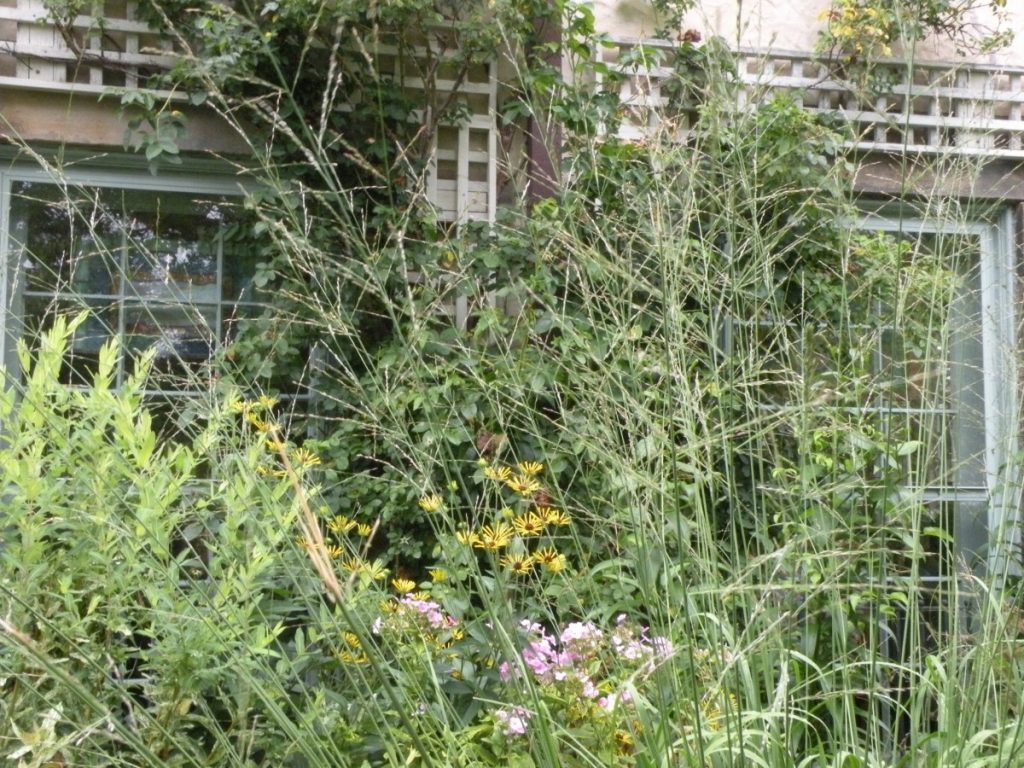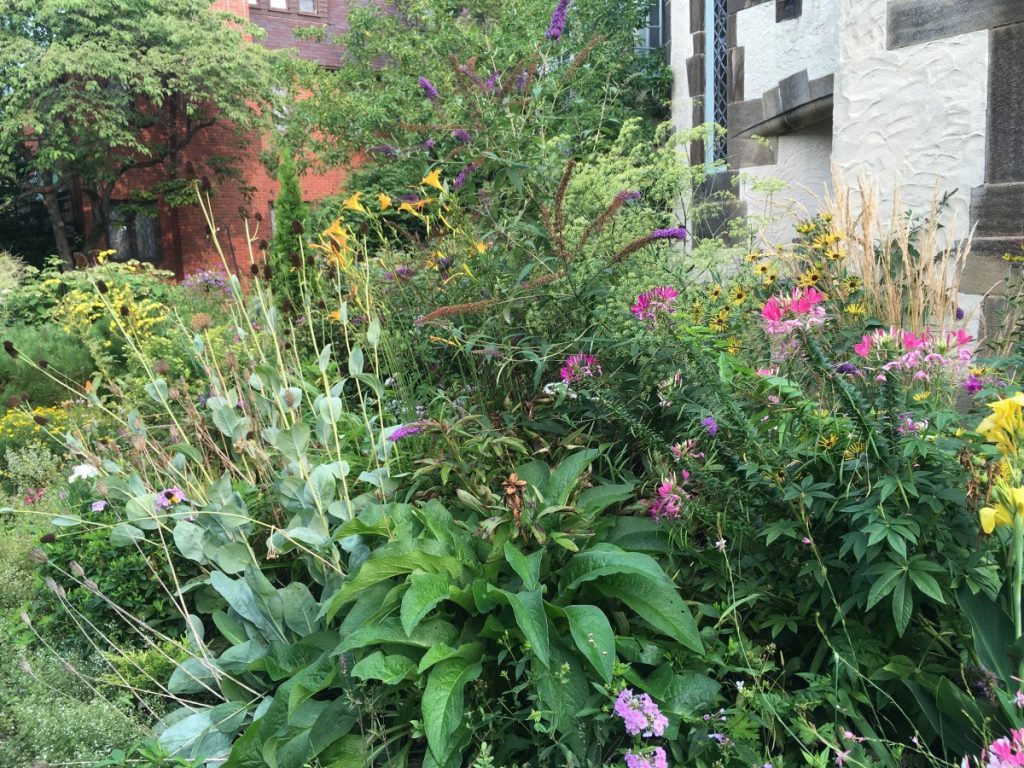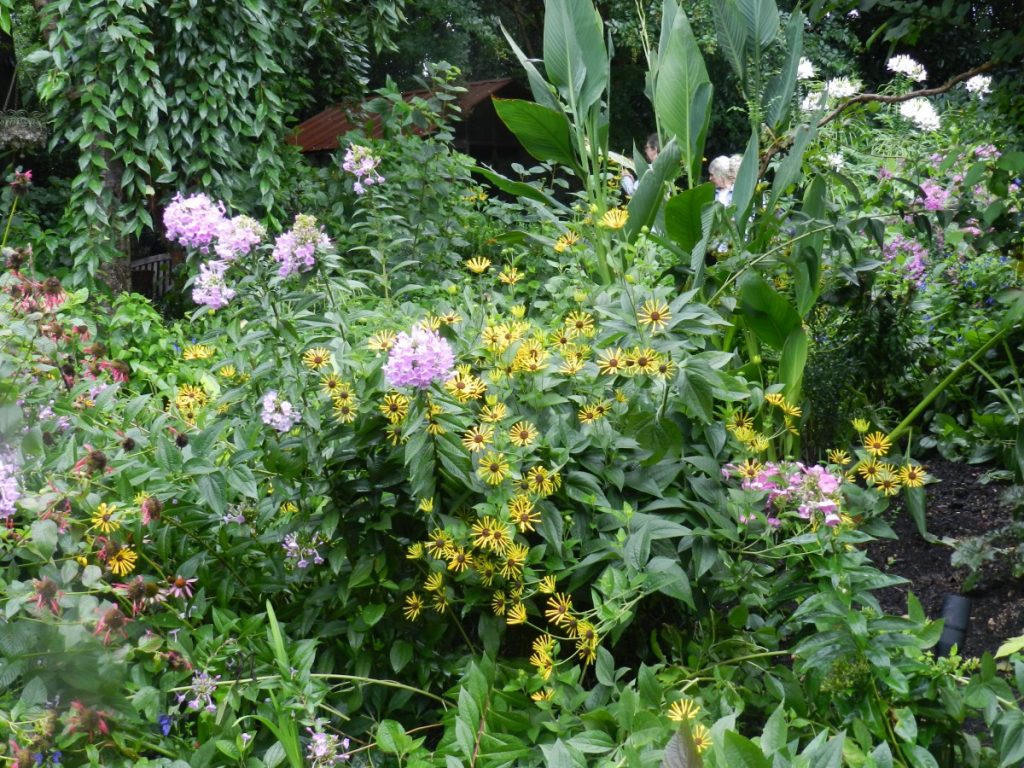
There are several species of Rudbeckia, the best known of which is R.fulgida, especially the cultivar ‘Goldsturm’ (often misspelled as Goldstrum). Sadly neglected is Rudbeckia subtomentosa, the Sweet Coneflower which is hardy to zone 5 and one of my favorite bloomers from July through September. This one is easily distinguished by its clear yellow, fluted petals that surround a mounded brown cone, giving the flower a totally different look.

through inflorescence of Molinia caerulea ‘Skyracer’ in my garden.
I am happy to say that this species is much easier to control than its fulgida cousins because I have seen no seeding in my garden where it has bloomed reliably for fourteen years. My reading indicates otherwise, that this coneflower does seed unless the deadheads are pruned, but I have seen no evidence of such seeding. The cultivar ‘Henry Eilers’ is a great perennial for the back of the border. Being four to five feet tall, it won’t work in every garden but similar in appearance but shorter at only two and a half to three feet tall is ‘Little Henry’. The strong stems are covered with hairy down while the foliage, when brushed, emits a pleasing vanilla and anise fragrance.
Just give them full sun, good drainage, and average moisture. Although somewhat drought tolerant, these cultivars will bloom better and longer with moisture but do not overfeed or overwater. Mine bloom from mid-July to early fall. For those looking to help the environment, know that the flowers attract pollinators and butterflies while birds are attracted to the seedheads. It is also an excellent cut flower.

Rudbeckia subtomentosa ‘Henry Eilers’ while the blue foliage and beige inflorescence of
Panicum amarum ‘Dewey Blue’ cools down this vignette.

Minaret’, Buddleia ‘African Queen’ and Panicum amarum ‘Dewey Blue’ in my garden.

This Rudbeckia is an excellent companion for ornamental grasses as is its cousin Rudbeckia maxima.
Mine is planted at the back of a south-facing bed beside Panicum amarum ‘Dewey Blue’ with Crocosmia ‘Lucifer’ in front of it. Further to the right, one year I planted Cleome, and the strong pink and yellow combination was quite pleasing. In a Raleigh garden, I saw ‘Henry’ in a pollinator garden that included a pale pink Phlox plus some cannas and Asclepias incarnata ‘Ice Ballet’. The beauty of a clear yellow is that it combines well with any other color.
This Rudbeckia should be better known. Meanwhile, there’s no reason that you can’t enjoy its unique flowers.


0 Comments